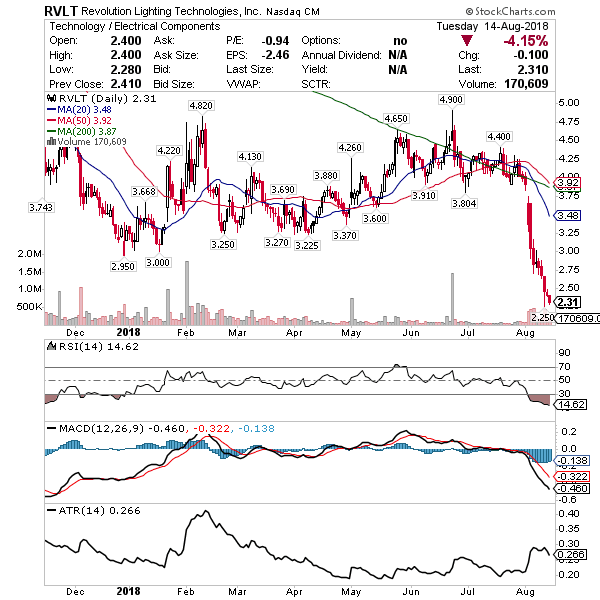26th October 2020Forex Trading
Contents
Many customers have their properties, including high-value products in the bank, and so the bank deals with such valuables in the lockers.
External auditors follow a set of requirements totally different from that of the company or group hiring them to do the work. The largest difference between an inner and exterior audit is the idea of independence of the exterior auditor. Almost all companies obtain a yearly audit of their financial statements, such because the income assertion, stability sheet, and cash circulate assertion. Frequent and surprise visit of the auditor to the business in continuous audit would compel the staff to keep the record up-to-date. It has a good moral check on the dishonest practice because of uncertain intervals clerks are not aware when the auditor will come. As a outcome, glitches in the system are promptly addressed and the corporate saves so much from detecting and correcting these errors early.
Partial Least Square regression is used for figuring out the determinants of audit fees. As it combines options from principal element analysis and a number of regression, it was helpful when figuring out the contribution of every assumed determinant of audit fee. Lenders often require the outcomes of an exterior audit yearly as part of their debt covenants.

As mentioned earlier, auditing is an impartial operate – one thing that administration doesn’t oversee. The auditor reports to the corporate board of directors to assist determine opportunities for enchancment. Since the audit is conducted continuously, errors and frauds are detected early and quickly, with the result that there is adequate time for making the necessary rectification.
The management has to pay high fees to the auditor, as the audit is performed throughout the year. The auditor may not verify again the accounts relating to the period for which the verification is conducted earlier. An audit report is an appraisal of a small enterprise’s complete financial standing. Completed by an unbiased accounting skilled, this doc covers a company’s property and liabilities, and presents the auditor’s educated evaluation of the agency’s monetary place and future. Audit reports are required by legislation if an organization is publicly traded or in an business regulated by the Securities and Exchange Commission . Companies seeking funding, as well as those looking to enhance inner controls, additionally discover this information valuable.
Finally, continuous auditing retains the company staff alert and cautious when finishing up their jobs, as they’re conscious that their work is continually being monitored. If there are important variations between the financial statements, auditors dig deeper into the information to attempt to find a passable cause for the change. For example, if the value of accounts payable has seen a marked enhance, the auditors will attempt to decide the explanations for this enhance. Considering that, two fashions which seize most of data on mentioned determinants, on the similar time also useful for predicting audit charges, are established. The contribution of each observed audit charges determinant is identified in a person model. According to that, the most important contributors to specific mannequin, in addition to most influential determinants that outline such audit fees mannequin have been identified.
What does mean by Idle Time and Overtime of Workers?
A concurrent audit is defined as a process of continuously verifying the transaction of a company or entity for a particular year. The auditor who is involved in the checking process will usually determine the period of verification. This concurrent audit is performed systematically regularly to know all the financial transactions made to ensure accuracy, authenticity, and compliance with procedures and guidelines. With concurrent auditing, the assets and the liabilities are verified at the year-end at the time of finalization. Also, with concurrent auditing, there is no preparation of financial statements.
A concurrent audit makes it easy to determine whether the financial management arrangements are effectively working and to know the areas of improvement used to increase efficiency. Companies who deploy Continuous Auditing can leverage technology to more efficiently analyze risk data on a frequent basis. This approach helps the detection of anomalies, outliers, inconsistencies and other factors to more efficiently focus audit resources. Audit committees often need to consult independent advisers on matters related to internal audit, business risk management and corporate governance. Under continuous audit, efficiency of the staff of the accounts department will increase, which make their work up-to-date and accurate.
- Frequent and surprise visit of the auditor to the business in continuous audit would compel the staff to keep the record up-to-date.
- An inside audit is done to ensure that methods are in place, that they are correctly functioning and that errors within the system are promptly corrected.
- In such cases, continuous audit will be of a great help because here interim accounts can be prepared without much delay.
- Under continuous audit each and every transaction of the business is checked by the Auditor regularly.
- The auditor may not verify again the accounts relating to the period for which the verification is conducted earlier.
Concurrent Audit is mandatory for banks with deposits of more than rs.50 crores. Any customer can make their shopping and other kinds of payments through bank transactions. As the bank lends money to its customers, there are possibilities for interest losses as a large amount of cash dealing is made. To ensure correct funding to the ATMs, the bank must https://1investing.in/ retain a balance properly. In this doc you can find the meaning of Advantages of Continuous Audit defined & explained in the simplest way possible. Besides explaining types of Advantages of Continuous Audit theory, EduRev gives you an ample number of questions to practice Advantages of Continuous Audit tests, examples and also practice B Com tests.
The auditor merely has to evaluate the data and reporting and perform whatever exams are a part of the audit program. Continuous monitoring, nonetheless, is more direct and quick – typically generating stories every single day, hour, and even minute. Management looks at this data to ensure no matter metric they are taking a look at stays throughout the tolerable vary, and if it doesn’t, that it’s appropriately managed.
Objective type Questions
Due to frequent visit by the audit staff, the clients staff may develop intimacy and friendship. In case of continuous audit presence of the auditor and his staff creates hindrances in the regular work of the business house. Since the auditor may pay a surprise visit, he exercises a great moral check on the clients staff. The staff will be afraid of committing errors and frauds as there are greater chances of their being detected. The regular visits performed by the auditor makes the clerk alert in maintaining day-to-day accounts. One major advantage of concurrent audit is that here early detection of irregularities and lapses is possible.

As a result of this increased profile, internal audit departments and leaders are searching for ways to broaden their skill sets and scope of influences. Since the auditor and his staff visits the organization more frequently and the management has to spend more of them, both in term of time and money. In such cases, continuous audit will be of a great help because here interim accounts can be prepared without much delay. Ownership is the first essential distinction between continuous auditing and steady monitoring. Managers may monitor employee performance, inventory ranges, cash circulate, or some other business course of. They will consider whether these causes make sense within the context of the business.
Advantages
For example; at the end of every month; the auditors’ team would come and they will conduct audit. This is required where transactions are voluminous and there is threat of losing controls. For example; at the end of every month; the auditors’ team would come and they will conduct audit. Under continuous audit each and every transaction of the business is checked by the Auditor regularly. An inside audit is done to ensure that methods are in place, that they are correctly functioning and that errors within the system are promptly corrected.

Those figures which have already be checked by the auditor in the books of accounts during his previous visit may be altered and frauds maybe perpetrated. Hence he loses continuity and fails to seek clarifications of the queries arising in the previous visit. The detailed checking involved in continuous Audit can discover errors and frauds easily and quickly. At the end of the financial period, the auditor checks the correctness of the financial statements and submits a report. The auditor is constantly engaged in checking the accuracy of the accounts during the whole accounting period.
What is continuous monitoring auditing?
So he is in a position to know the technical details of it and hence can be of great help to the clients by way of making valuable suggestions. Under continuous audit, audit can be completed quickly, and finally accounts can be presented sooner. Under this system, a detailed examination of accounts is possible as the auditor gets one complete financial year for the purpose. Considering that, two models which capture most of data on mentioned determinants, at the same time additionally useful for predicting audit fees, are established. Business Where the Continuous Audit is Applicable Where it is desired to present the accounts just after the close of the financial year, as in case of banks. Where the statement of accounts arerequired to be presented to the management after every month or quarter.
The auditor visits the business concern at frequent intervals, say, weekly or fortnightly or monthly during the period of audit. The purpose of internal auditing is to offer value and enhance an organization’s operations. Records and figures in the books of accounts which have already been checked by the auditor may be altered after the audit is over. Yes, the concurrent auditor of a Bank can choose to relinquish the Concurrent Audit and accept the assignment of Statutory Audit. The auditor must ensure whether all the charges are collected and interest rates are inputted accurately in the CBS. Also, MISs to be generated are used to analyze the various charges and interest computations.
Continuous audit helps in quick preparation of interim accounts and helps the board of directors to declare interim dividend. Within the concurrent audit, all sorts of transactions are parallel covered and included. Knowing the process of the concurrent audit will help the auditor to understand how the audit must be conducted. Errors and frauds can be detected easily and immediately because auditor checks the accounts at regular intervals and also in a detailed manner. Further the opportunities for complicated frauds are lessened and they can be detected before they attain larger proportions. As and when errors are detected, steps are also taken for their rectification immediately.
Partial Least Square regression is used for identifying the determinants of audit charges. Audit work in such a case continues throughout the year, therefore the accounting work is also done side-by-side. This helps in the preparation of final accounts immediately after the continuous auditing meaning end of the year. Regular visit of an auditor helps the auditor to understand the technical issues of business. Since the accounts are checked throughout the year, it is possible to present the audited accounts to the shareholders soon after the close of the financial year.
